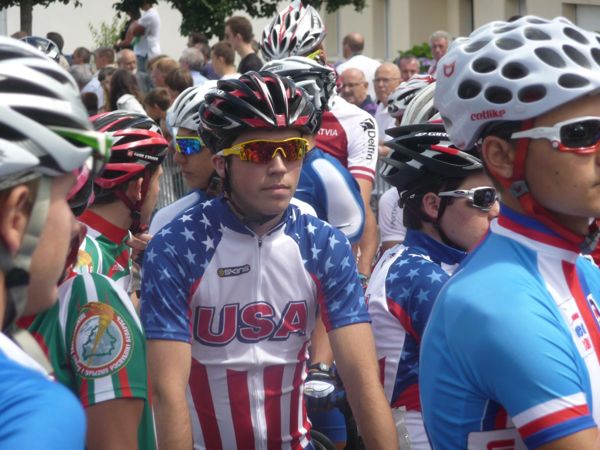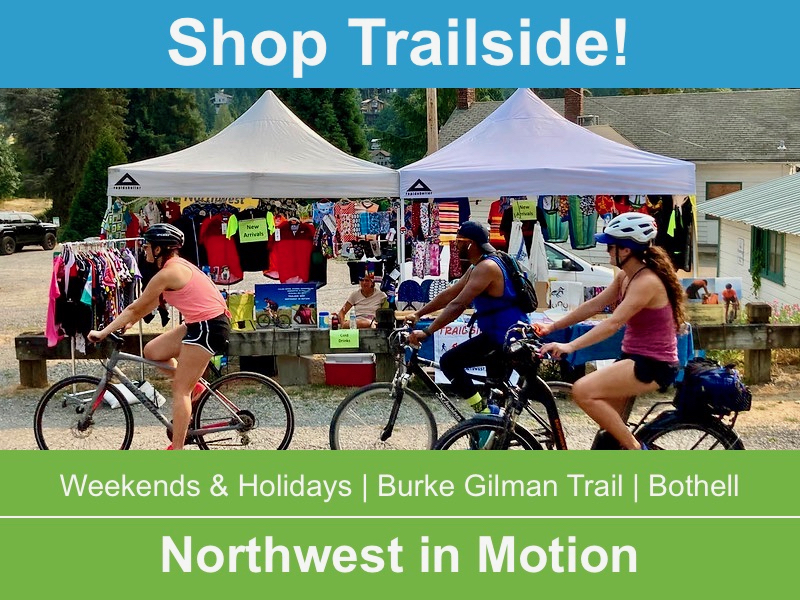This is the second in a four part series about several of Seattle-area’s junior riders; first in the series was about Logan Owen.
Max O’Neal has been riding for Herriott Sports Performance (HSP) and was selected to compete with the US National Junior Team in Europe this summer. Max just graduated from Ballard High School and is moving on to the University of Washington with plans to study computer science.

How long were you in Europe? In which races did you compete?
I left for Europe on July 23rd and trained and raced for almost 5 weeks. I came back on August 19th, my 18th birthday. During this trip, I did 9 kermesses, a UCI 1.1 race (La Philippe Gilbert Juniores), and a Nations Cup race (Trophee Centre Morbihan).
What was life like day to day?
The USA Cycling team house is currently in Sittard, The Netherlands, about 1km from Germany and 10km from Belgium. Since it is part of a sports hotel in an athletics complex, rooms were limited and everyone had roommates. Once I got settled in the team house, daily life depended on the schedule put on the whiteboard by our director, Billy Innes. Meal times and ride departures were the only constants.
Training days were typically 1.5 to 3 hours, with recovery days being 1 to 1.5 hours easy. The majority of our rides were done in Germany, but because of our close proximity to Belgium as well, we would encounter Dutch, German, and Belgian rain on the same ride. These rides were all done in the morning so that we would have free time in the afternoon to go into town and have “culture days,” where Billy would take us to cool places that only locals knew about.

Races were in the afternoon, with the exception of the early morning TT at Morbihan. We would have a big breakfast, pack our race bags, hop into the Sprinter van, and go to the races. Distances ranged from 70-110km for each of the races. These junior races would have no less than 40 riders and occasionally in excess of 100 riders. The Gilbert race had almost 200 riders. Now that’s a big field!
Outside of training, racing, and sightseeing, a lot of time was spent in the rider’s lounge. Common activities included “YouFaceSkypeChatting,” watching incomprehensible Dutch TV, taking embarrassing pictures of each other, photo-shopping said pictures, and abusing the space-age coffee machine.
Before the trip, what did you know about the other guys you raced with?
I had raced against all of them before. Last year, I met Diego at the NW Juniors Classic and Seth and Charlie at the National Talent ID Camp at the OTC. I met Tim and Greg this year at Nationals. Even though all of these guys had been my competition at some point in the past couple years, we had to come together and race as a team in order to achieve success in Europe. Our team meshed extremely well; we put a rider on the podium in almost every race we entered and won 4 in a row by the end of the trip.
What did you learn from your experiences this summer?
Too many things. It’s ultimately why USAC brings riders over to race in Europe. When you spend that much time in an environment like that, you’re bound to learn something new every day. Some things are learned the easy way, others the hard way.
Belgian racing, or kermesse racing, is different from American racing in a number of ways. First, Belgians never stop attacking. EVER. I would have guys attack my breakaway even when we were 2 minutes up the road and rotating smoothly. In addition, Belgians crawl through the corners and sprint out of them, regardless of road conditions. This means that unless you’re at the very front, the accordion effect forces you to burn matches just to stay in the group. Second, the road is the road on race day; corners aren’t swept, cracks and holes in the road aren’t filled, and road furniture isn’t marked. You just pre-ride the course, make mental notes of the hazards, and then race. Third, the average speed of the race remains consistent, regardless of the distance. Whether it’s 70km or 110km, the average speed is always somewhere in the 40-45kph range.

Outside of the races, I learned a few things about the riders and staff. One of them was to never ever ever bring a bike with issues to the mechanics the day of a race, regardless of the importance of the race and the severity of the issue. I learned this the hard way when I noticed a funny noise in my cranks and didn’t address it until the kermesse the next day. The mechanic that came with us that day gave me permission to use whichever tools I needed to fix it myself.
While living in the Netherlands, I learned about European life and its pros and cons. Cities are built around a Centrum, where many of the popular shops, bars, and restaurants are located. In Sittard, you are never more than 2km away from the Centrum, so everyone commutes around town by bike. Every road in and around Sittard has a bike path, so unless you ride in the middle of the road, you don’t have cars honking at you like they do here. The only problem I had was that all the shops close at 7pm, a concept I couldn’t wrap my head around nor like, especially when I needed stuff late at night.
You’ve just graduated from Ballard High School and are about to start at UW to study computer science. Looking ahead and assuming some kind of offer comes out of your European performances this summer, how do you intend to balance cycling and academics?
Last time I checked, I’m not Greg LeMond, I haven’t won a Grand Tour, and I’m not on a WorldTour team. I realize I’m only 18 and have a number of years to fulfill a cycling career. The University of Washington has given me a rare opportunity to get an education from a world-class institution in a field that is in high demand and pays well. I’m still unsure how I’m going to balance college and cycling, but I can tell you that school will always be ahead of athletics.
Coach David Richter sums up his experiences with Max (and Thorsten Askervold):
“Working with Thorsten and Max, and young riders in general, is inspiring. I get the feeling a parent gets when their child wins a spelling bee, or hits a home run. They look up to me and I’m rarely the bad guy. I teach them how to do something they love, and I don’t have to ground them. I’m sort of their cool uncle.
I create an environment and a path for them to succeed. It’s up to them to get it done. Both Max and Thorsten can take cycling as far as they want, the talent is there. The fire is burning strong, too. But, as they know, that fire needs to keep burning to keep advancing.”
Next: Junior Spotlight 2014-Ben Peterson
Previous: Passing the Torch-Logan Owen
